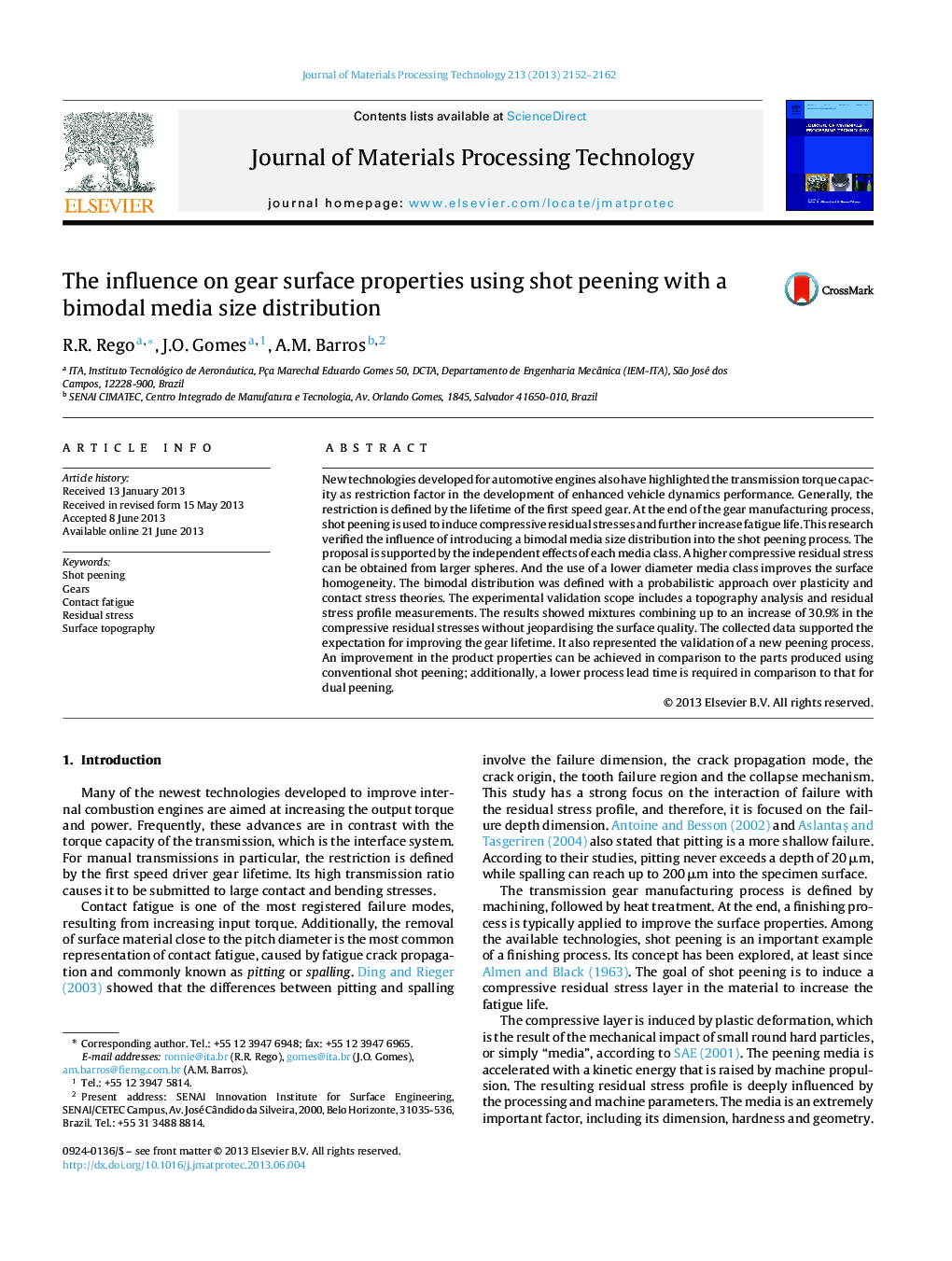| Article ID | Journal | Published Year | Pages | File Type |
|---|---|---|---|---|
| 10418332 | Journal of Materials Processing Technology | 2013 | 11 Pages |
Abstract
New technologies developed for automotive engines also have highlighted the transmission torque capacity as restriction factor in the development of enhanced vehicle dynamics performance. Generally, the restriction is defined by the lifetime of the first speed gear. At the end of the gear manufacturing process, shot peening is used to induce compressive residual stresses and further increase fatigue life. This research verified the influence of introducing a bimodal media size distribution into the shot peening process. The proposal is supported by the independent effects of each media class. A higher compressive residual stress can be obtained from larger spheres. And the use of a lower diameter media class improves the surface homogeneity. The bimodal distribution was defined with a probabilistic approach over plasticity and contact stress theories. The experimental validation scope includes a topography analysis and residual stress profile measurements. The results showed mixtures combining up to an increase of 30.9% in the compressive residual stresses without jeopardising the surface quality. The collected data supported the expectation for improving the gear lifetime. It also represented the validation of a new peening process. An improvement in the product properties can be achieved in comparison to the parts produced using conventional shot peening; additionally, a lower process lead time is required in comparison to that for dual peening.
Related Topics
Physical Sciences and Engineering
Engineering
Industrial and Manufacturing Engineering
Authors
R.R. Rego, J.O. Gomes, A.M. Barros,
